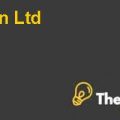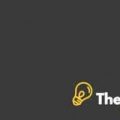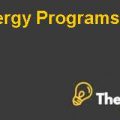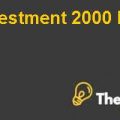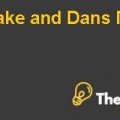ANDERSON STREET – VALUE OF PROPERTY Case Solution
Leonard had a deep interest in the field of real estate and thus, he wanted to gain an in-depth understanding of the real estate businesses and investments. He wanted to invest in a property with his total inherited equity of $ 25,000 for generating significant rental income. He came to know about a property on Anderson Street on Beacon Hill which was a 4 unit house and in order to justify the asking price of the property of $ 168,000, he began to perform the valuation of the property.
The rent set by him was $ 990 per month for floors 1, 2 and 3 and $ 880 per month for floor 4. From the total gross rental income 5% commission would be paid to the broker and 5% vacancy allowance has been estimated based on the market statistics. The income and expense statement has been prepared by Leonard which is shown in exhibit 1 of the case. The rental income tax rate assumed by him was 9.5% and a 5% allowance for the management and repairs had also been included in the income and expense account.
Since Leonard did not have the complete financing for the property therefore, he was able to obtain the remaining financing from the local savings bank who had agreed to loan him the remaining amount. The valuation of the property has been performed on the basis of the income and expense account, which has been prepared by Leonard as shown in exhibit 1 of the case. Exhibit 1 of the case shows all the rental income, net rental income, expenses and the final income generated by the 4 unit property. The annual rental which would be received by Leonard after deducting all the expenses would be around $30,800.
The holding period of the property has been assumed to be 3 years and after 3 years the property would be sold and the entire loan would be repaid to the bank by Leonard. The initial costs would include $ 25,000 equity he had inherited from his aunt. Since it has been assumed that he would hold the property for 3 years therefore, the architect’s plan costs have been spread evenly over the period of 3 years. The financing charge which would be the annual payment on loan (including interest and part principle) is $24,300 as stated by the local savings bank officers. This payment would be made at the end of each of the three years.
Along with this, the closing costs at the end of year 1 have also been included. The closing costs would be $ 900 legal and title expenses, $ 2100 for loan origination fee and $1000 for escrow funds. The capitalization rate has been provided in the case which is 11.6%. The net cash flows have been calculated by subtracting financing charges and all the other closing expenses from the cash flow from operations. The cost of the architect’s plan has also been deducted in each of the three years. The value of the property at the end of year 3 which would be its value at sale has also been calculated by dividing the year 3 net cash flow with the capitalization rate of 11.6%.
The value of the property at the end of year 3 has been calculated to be $ 214,080. Summing up the present value of the net cash flows and the value of the property at the end of year 3, we have the final property value of $ 264,312.....................
This is just a sample partial case solution. Please place the order on the website to order your own originally done case solution.

